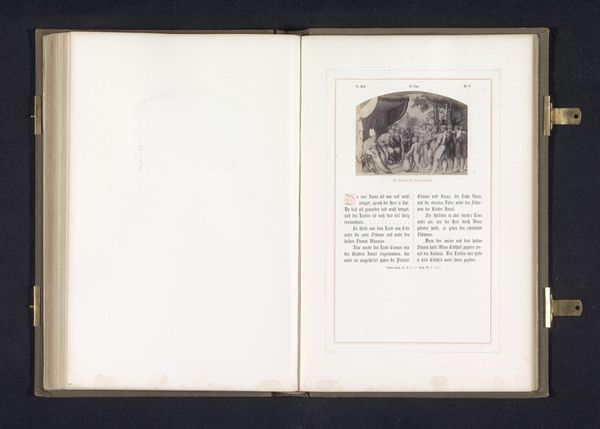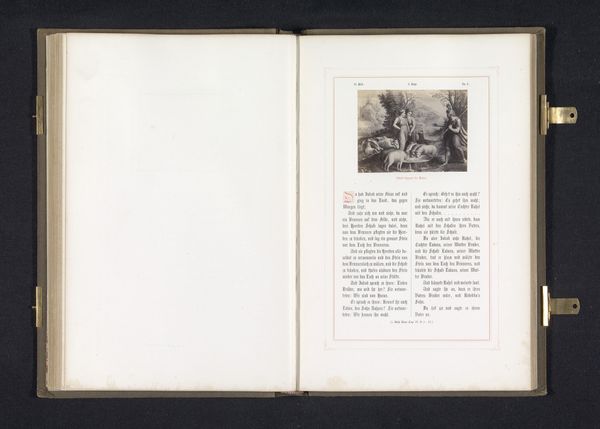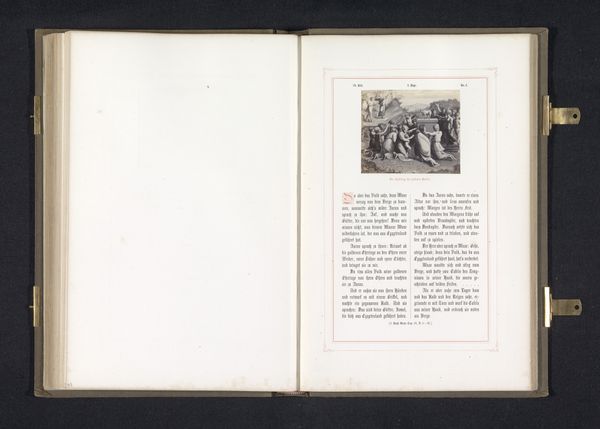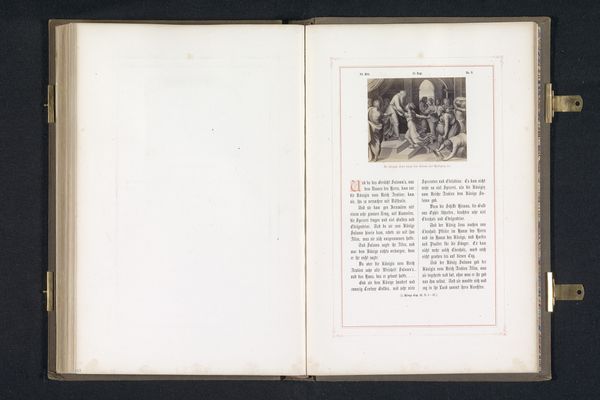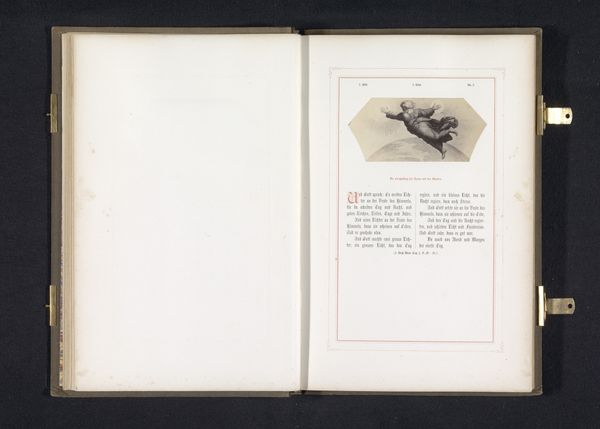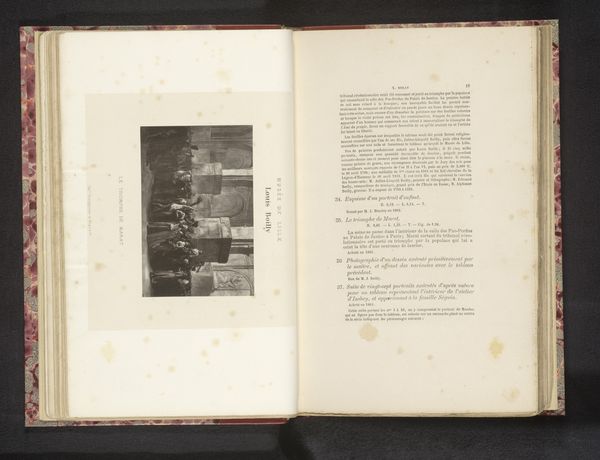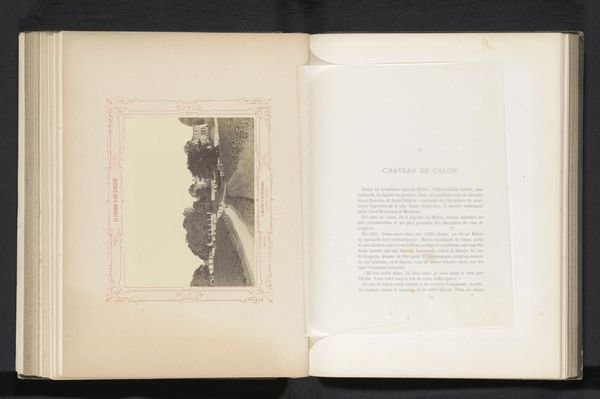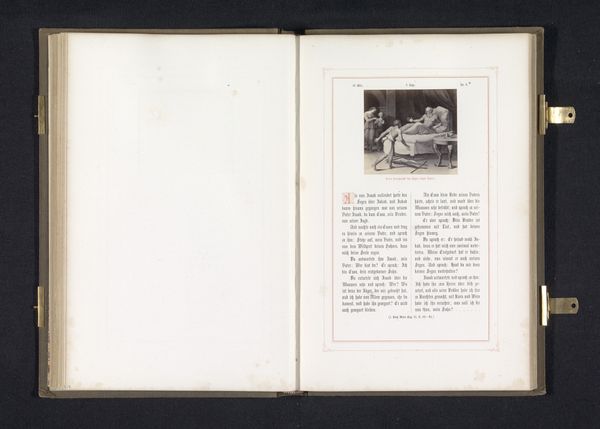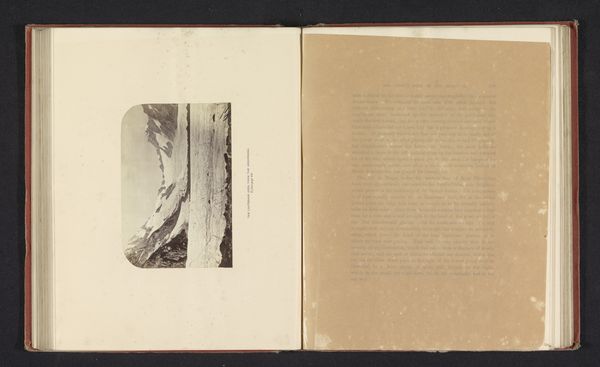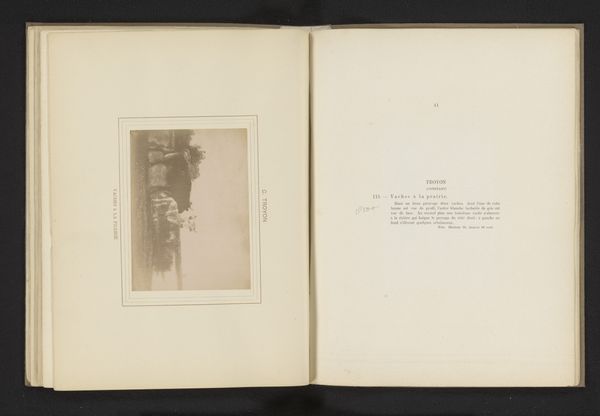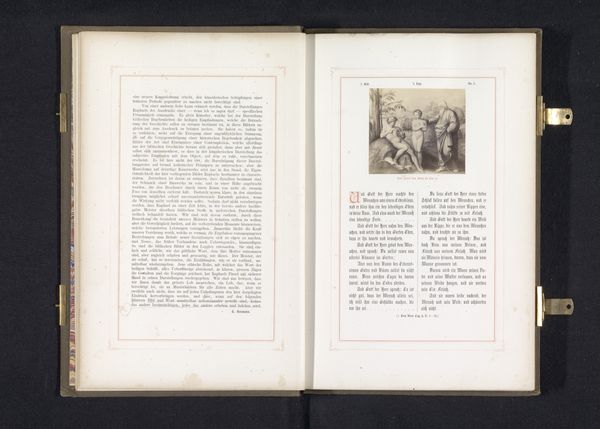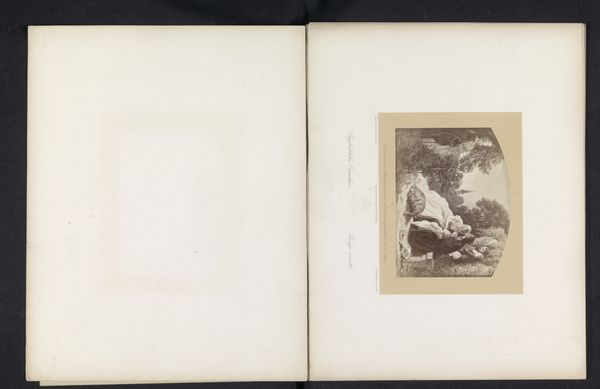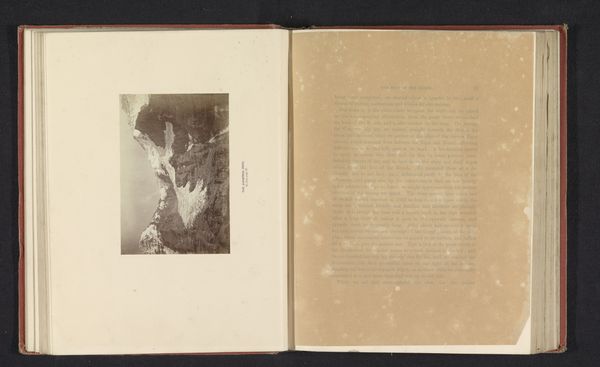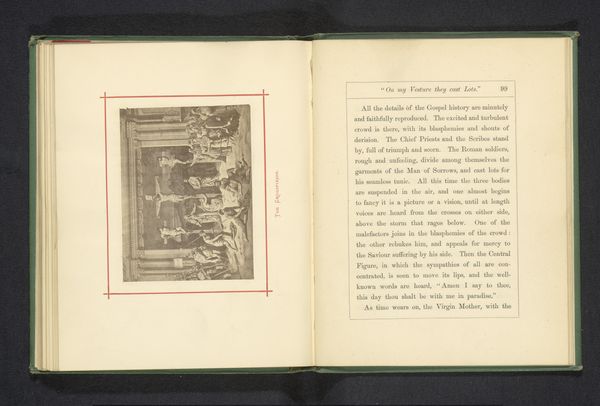
Fotoreproductie van een prent naar een fresco van Moses die de tien geboden ontvangt door Rafaël voor de loggia's in het Vaticaan before 1861
0:00
0:00
print, etching, paper, fresco, engraving
#
portrait
#
aged paper
#
paperlike
# print
#
etching
#
paper
#
fresco
#
hand-drawn typeface
#
fading type
#
thick font
#
white font
#
history-painting
#
handwritten font
#
delicate typography
#
italian-renaissance
#
thin font
#
engraving
#
historical font
Dimensions: height 62 mm, width 79 mm
Copyright: Rijks Museum: Open Domain
Curator: Here we have a photographic reproduction of a print dating before 1861, based on Raphael’s fresco "Moses Receiving the Ten Commandments" in the Vatican. It appears to be an etching or engraving on paper, attributed to Gustav Schauer. It’s a fascinating piece of art history! Editor: My first impression is of age and solemnity. The faded image, presented within the opened book, speaks to me of preservation and the weight of history itself. Curator: Indeed. Prints like these served a vital public role. Disseminating artistic and religious imagery to a broader audience, especially important during periods of limited access to original artworks. Think about how this image, reproduced and distributed, impacted the cultural understanding of religious narratives and reinforced institutional power. Editor: Exactly! Moses, situated at the summit amidst clouds, receives not just divine law, but also visual precedent. The choice to depict this scene repeatedly throughout history emphasizes the continuous nature of ethical frameworks. This composition taps into collective cultural memory surrounding law and order. Curator: Consider the layers of interpretation, as well. We have Raphael’s Renaissance fresco, transformed into a print, and then re-photographed for a book. Each step impacts our perception, filtering it through different technologies and cultural lenses. The handwritten font around the central picture also attracts attention, and seems delicate, and deliberate. Editor: And think of the book’s format! The presentation feels very considered and intentional, resembling illuminated manuscripts and early printed texts, enhancing the image's connection to both the religious past and print culture's role in shaping how these ideas reach the public. There’s a nostalgic element present that adds to its visual appeal. Curator: Agreed. Reproductions often carry the aura of the original, yet become artifacts in their own right, revealing tastes, technologies, and societal values of their era. Editor: This image reminds us that meaning isn’t fixed. Visual symbols accrue emotional and intellectual resonance through cultural use, becoming historical palimpsests. Curator: Precisely. This book, like the story of Moses itself, acts as a vessel through time, constantly negotiated and newly defined by its readers. Editor: Looking at this image deepens my sense of history's layered nature and how images weave collective and personal narratives.
Comments
No comments
Be the first to comment and join the conversation on the ultimate creative platform.
